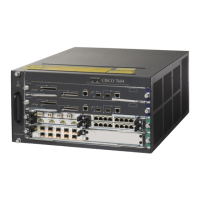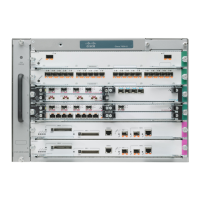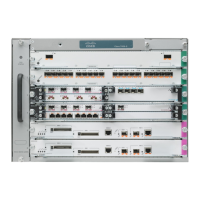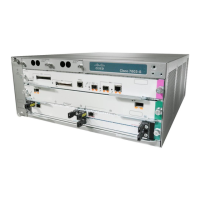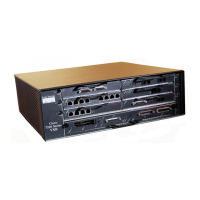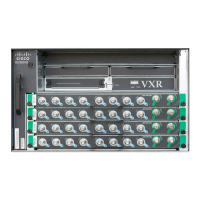35-2
Cisco 7600 Series Router Cisco IOS Software Configuration Guide—12.1E
78-14064-04
Chapter 35 Configuring Web Cache Services Using WCCP
Understanding WCCP
WCCP Overview
The Web Cache Communication Protocol (WCCP) is a Cisco-developed content-routing technology that
allows you to integrate cache engines (such as the Cisco Cache Engine 550) into your network
infrastructure.
Note Cisco Systems replaced the Cache Engine 500 Series platforms with Content Engine Platforms in July
2001. Cache Engine Products were the Cache Engine 505, 550, 570, and 550-DS3. Content Engine
Products are the Content Engine 507, 560, 590, and 7320.
The Cisco IOS WCCP feature allows use of Cisco Cache Engines (or other caches running WCCP) to
localize web traffic patterns in the network, enabling content requests to be fulfilled locally. Traffic
localization reduces transmission costs and download time.
WCCP enables Cisco IOS routing platforms to transparently redirect content requests. The main benefit
of transparent redirection is that users need not configure their browsers to use a web proxy. Instead, they
can use the target URL to request content, and have their requests automatically redirected to a cache
engine. The word “transparent” is this case means that the end user does not know that a requested file
(such as a web page) came from the cache engine instead of from the originally specified server.
When a cache engine receives a request, it attempts to service it from its own local cache. If the requested
information is not present, the cache engine issues its own request to the originally targeted server to get
the required information. When the cache engine retrieves the requested information, it forwards it to
the requesting client and caches it to fulfill future requests, thus maximizing download performance and
substantially reducing transmission costs.
WCCP enables a series of cache engines, called a cache engine cluster, to provide content to a router or
multiple routers. Network administrators can easily scale their cache engines to handle heavy traffic
loads through these clustering capabilities. Cisco clustering technology enables each cache member to
work in parallel, resulting in linear scalability. Clustering cache engines greatly improves the scalability,
redundancy, and availability of your caching solution. You can cluster up to 32 cache engines to scale to
your desired capacity.
Hardware Acceleration
Cisco 7600 series routers provide hardware acceleration for directly connected Cisco Cache Engines,
which is more efficient than Layer 3 redirection in software on the MSFC with generic route
encapsulation (GRE).
With Release 12.1(2)E and later releases, WCCP Layer 2 PFC redirection allows Cisco Cache Engines
to use hardware-supported Layer 2 redirection. A directly connected Cache Engine can be configured to
negotiate use of the WCCP Layer 2 PFC Redirection feature. The WCCP Layer 2 PFC redirection feature
requires no configuration on the MSFC. The show ip wccp web-cache detail command displays which
redirection method is in use for each cache.
The following guidelines apply to WCCP Layer 2 PFC redirection:
• The WCCP Layer 2 PFC redirection feature sets the IP flow mask to full-flow mode.
• You can configure the Cisco Cache Engine software release 2.2 or later releases to use the WCCP
Layer 2 PFC redirection feature.

